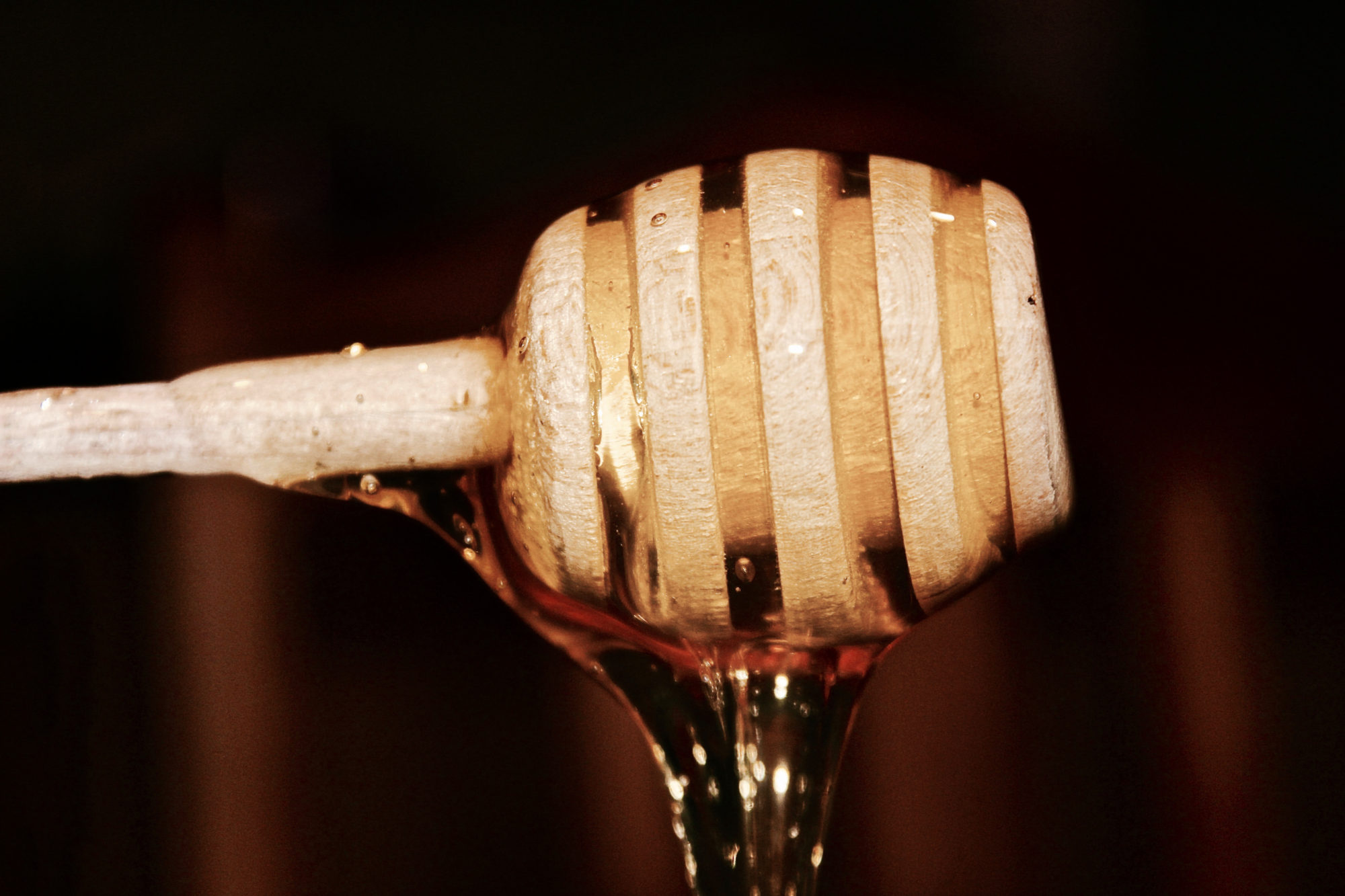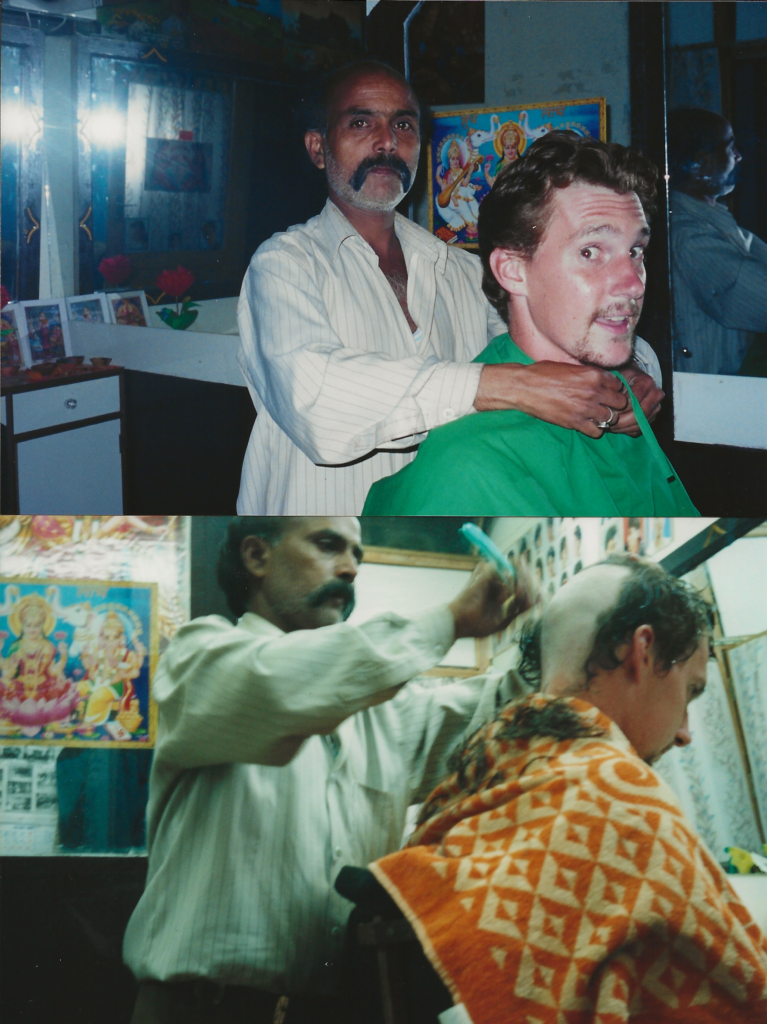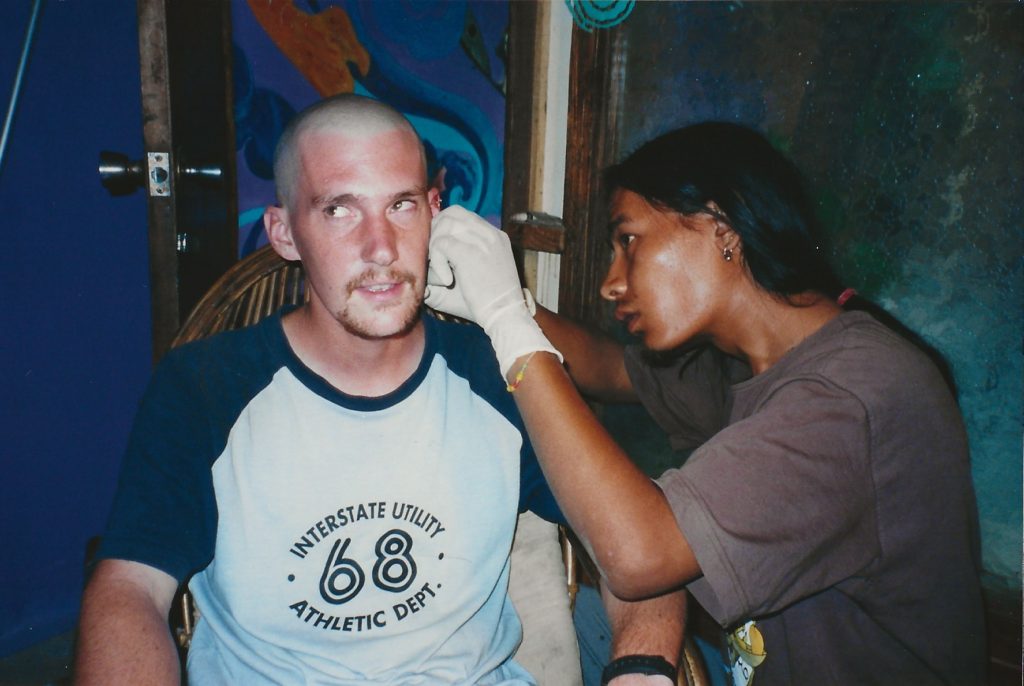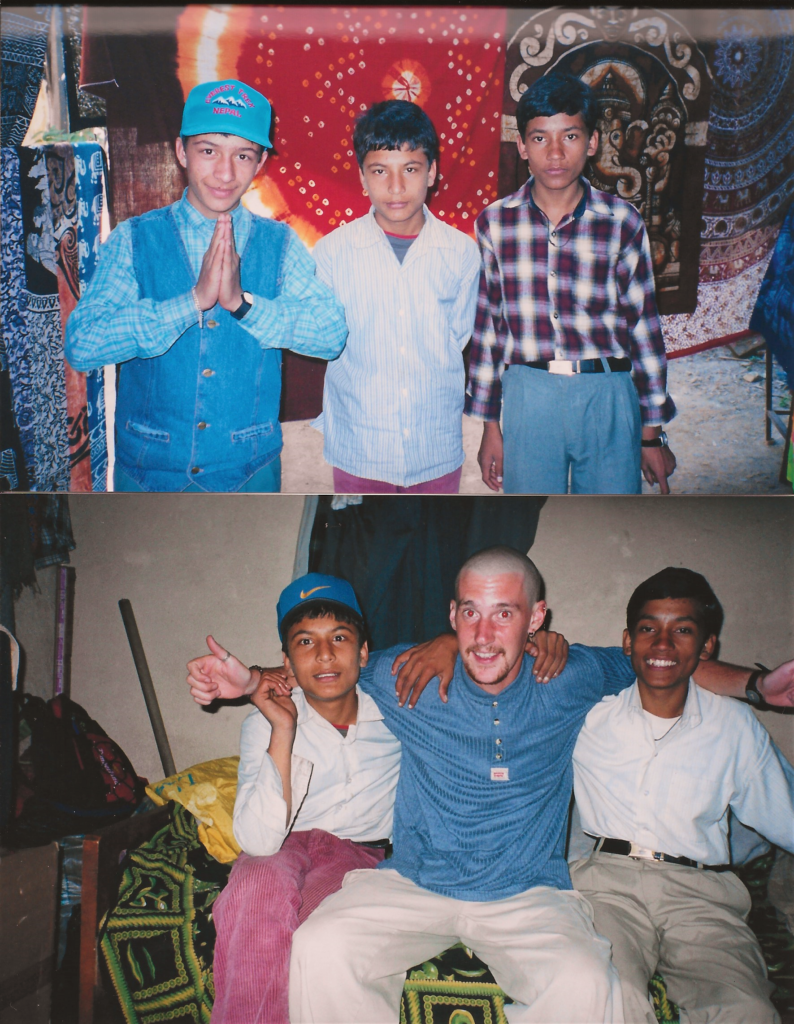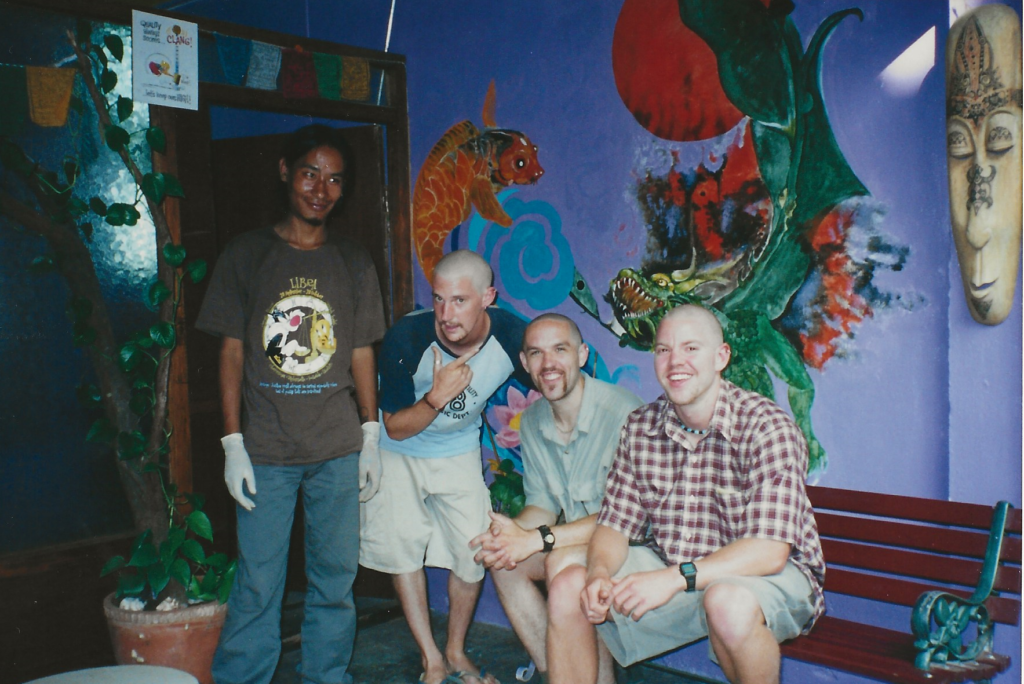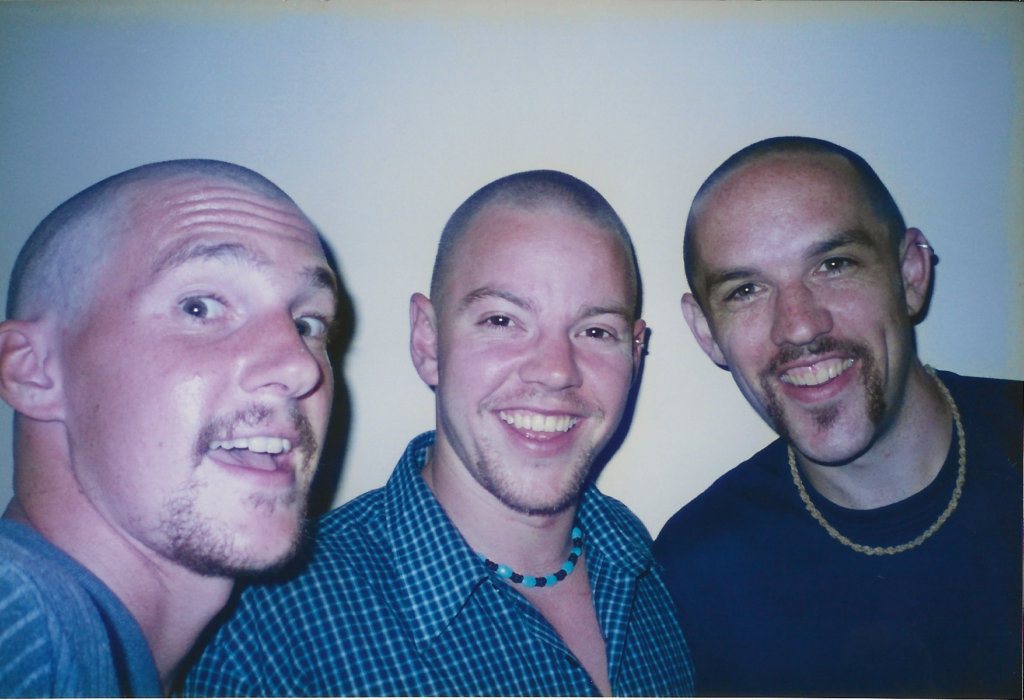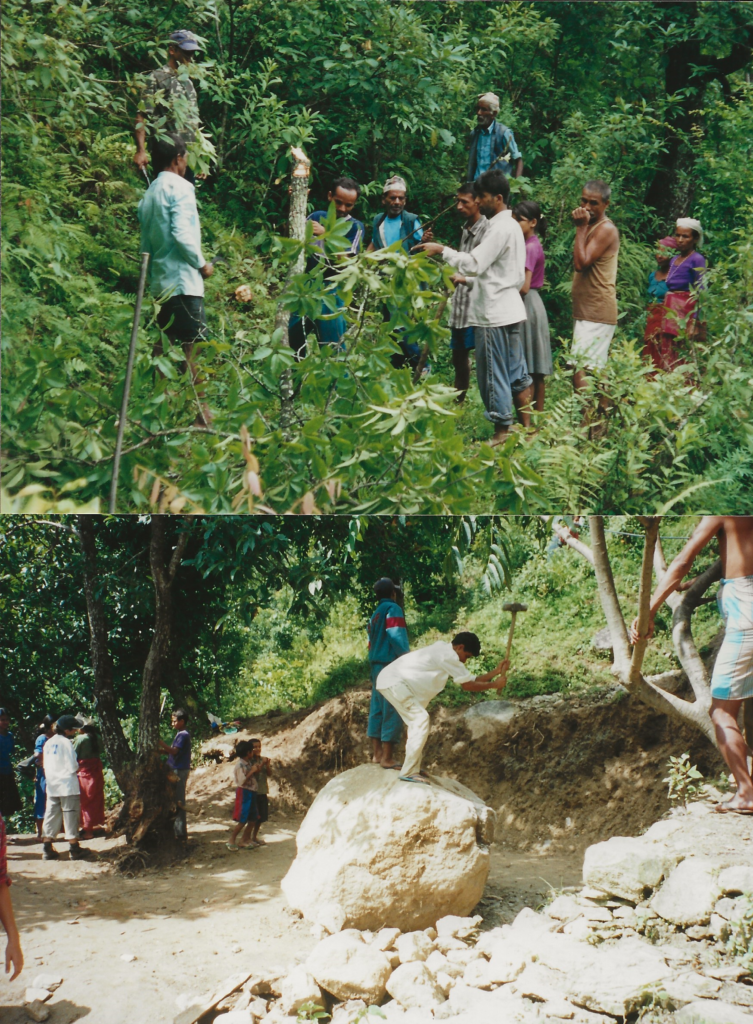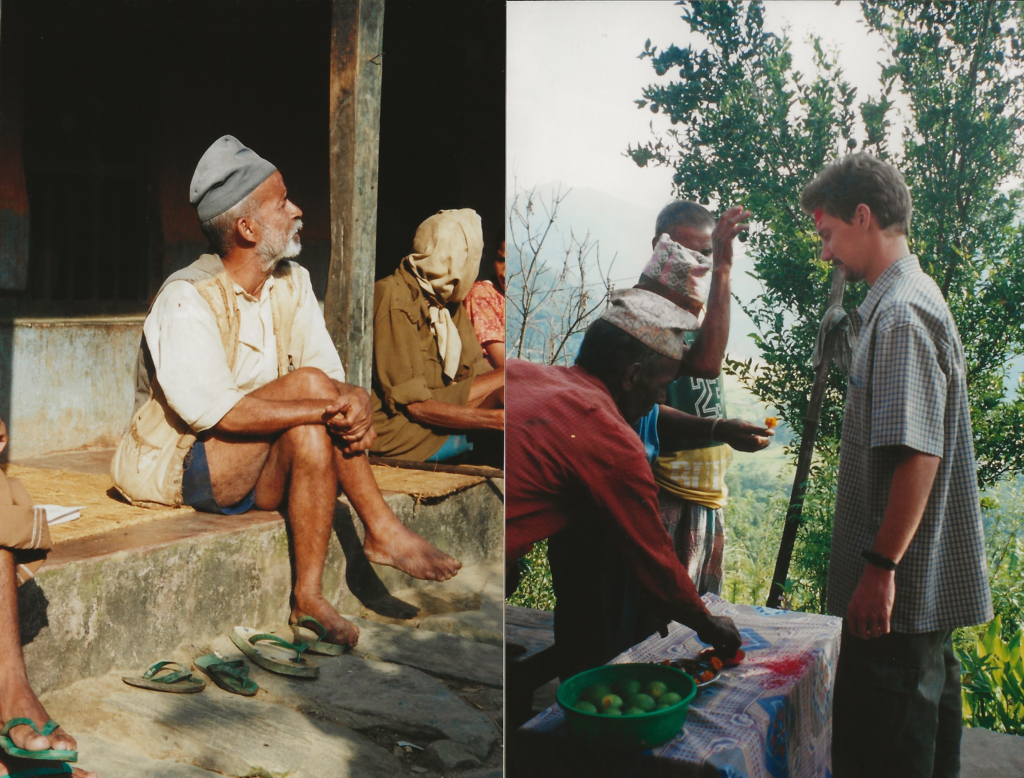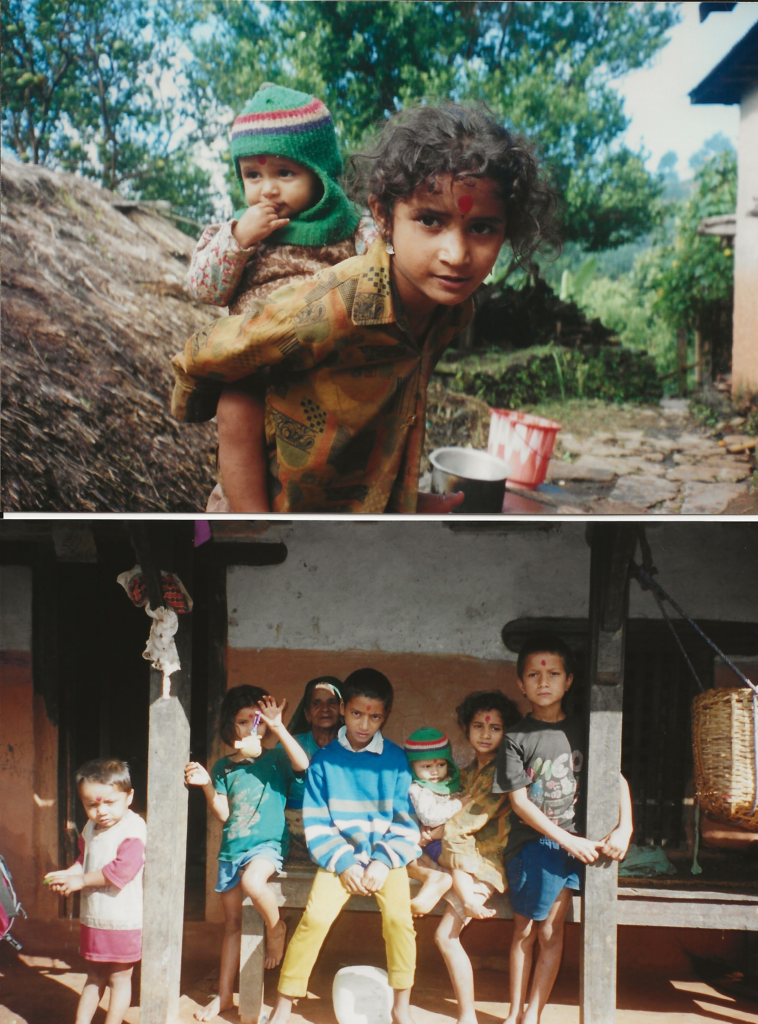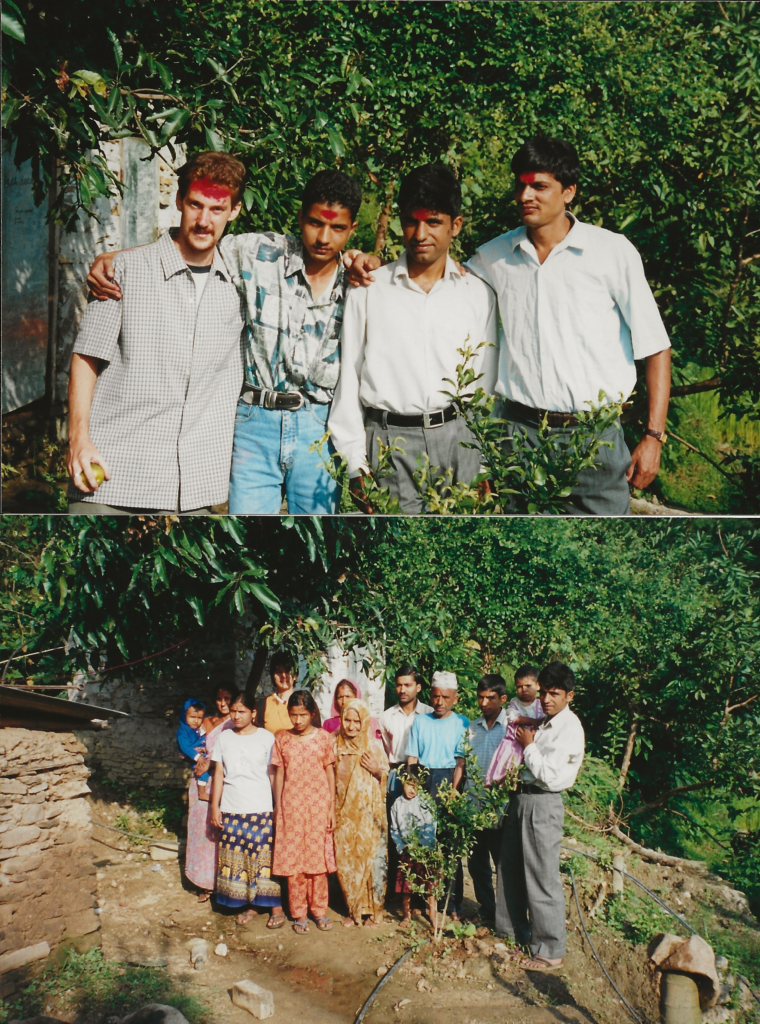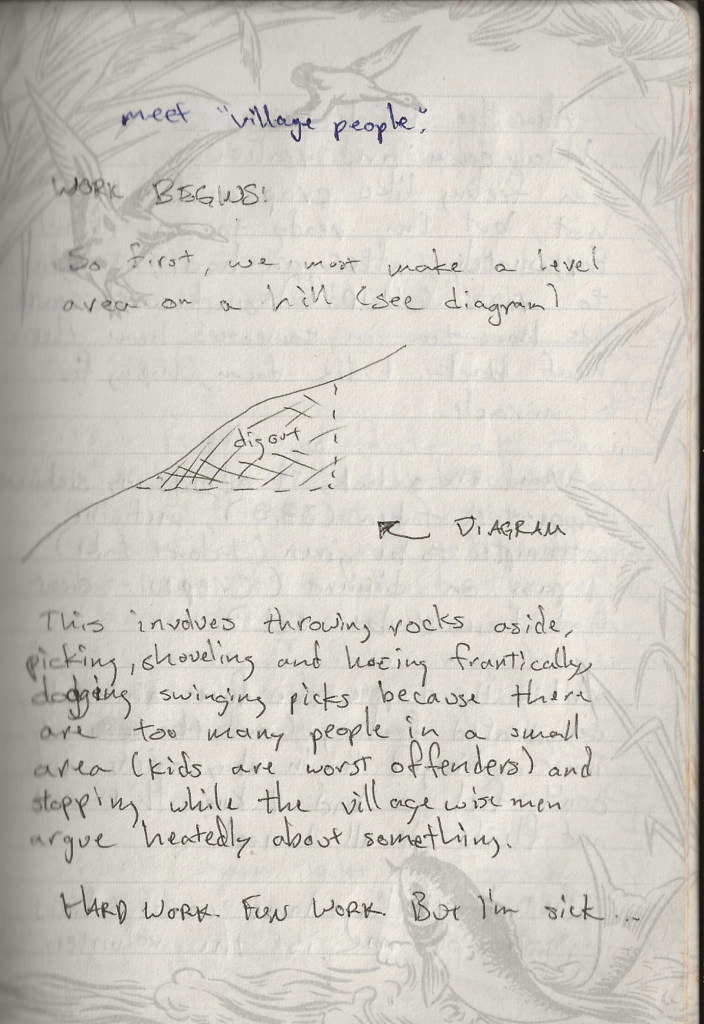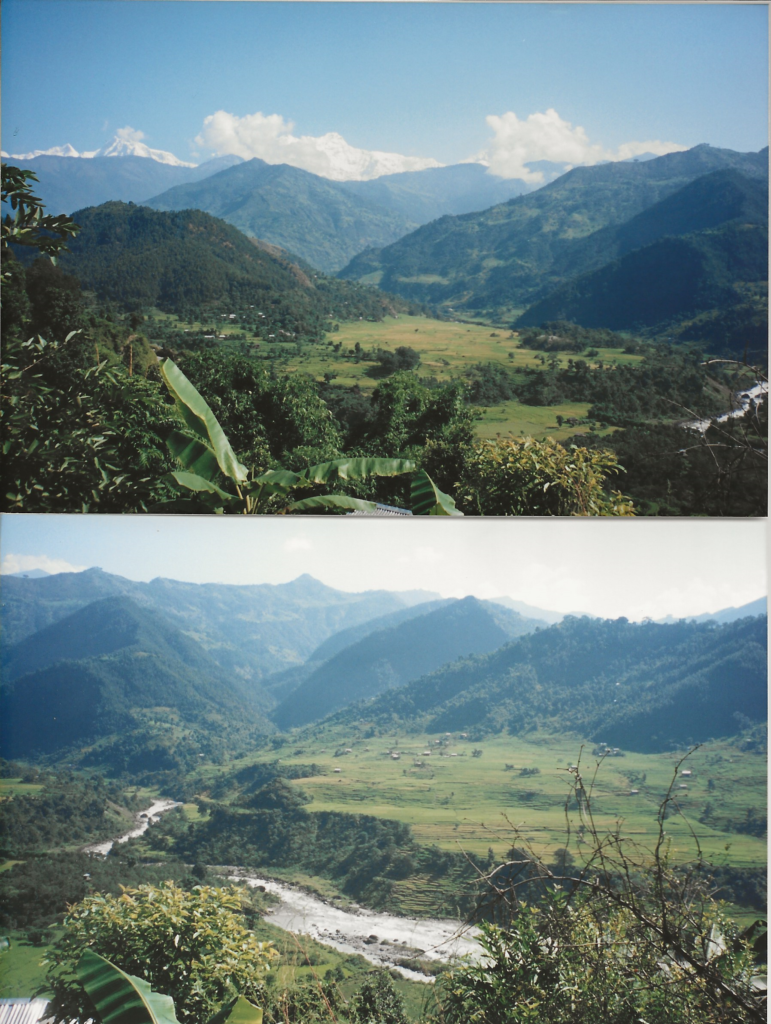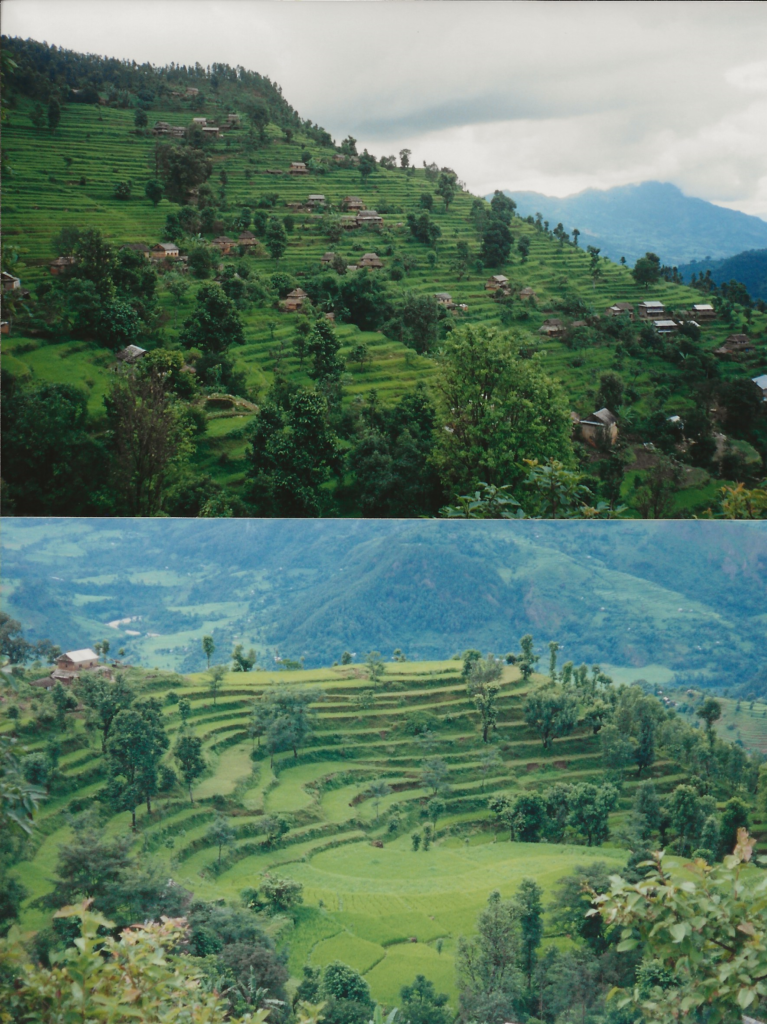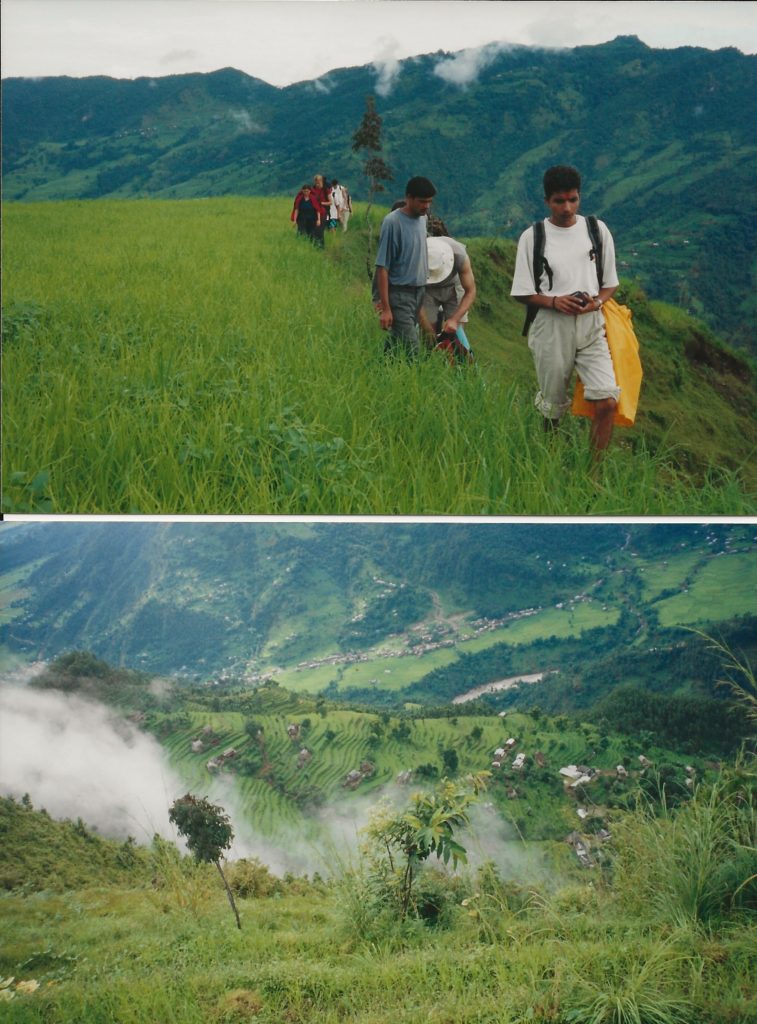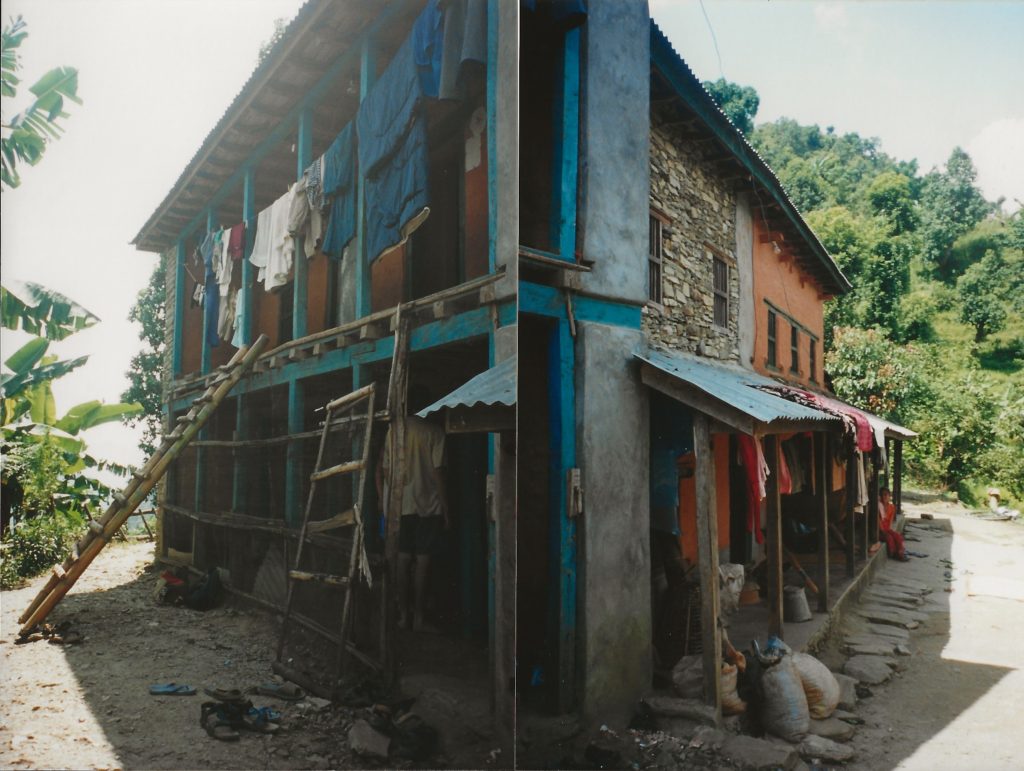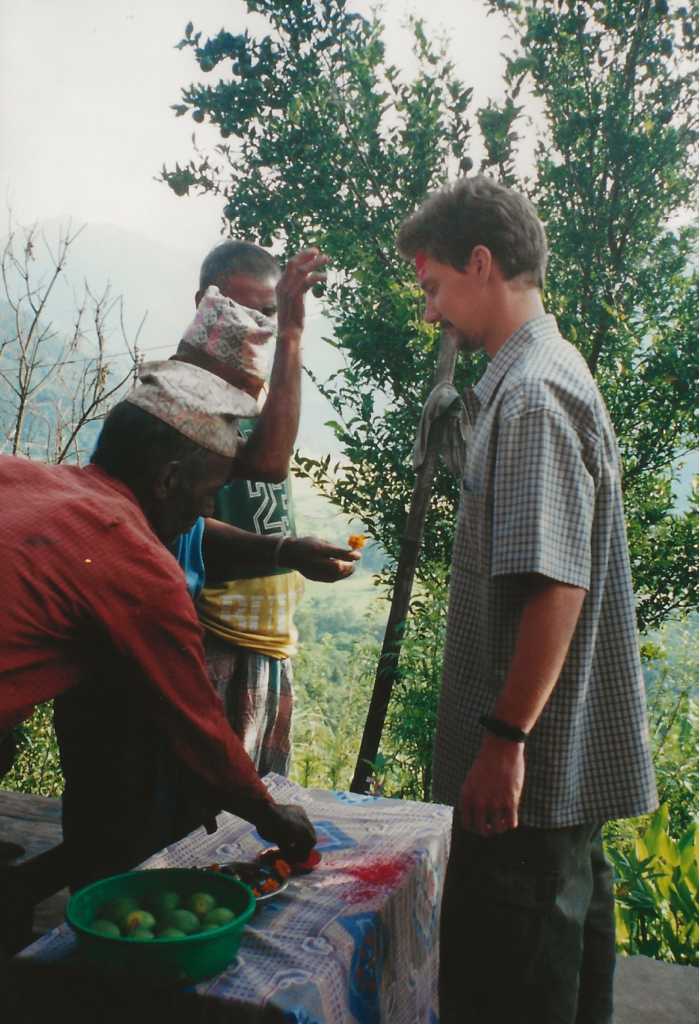Date: Mon, 3 Dec 2000 22:52:36 -0800 (PST)
From: Jay Schneider
Subject: Beware the monkeys…
A few things before we get started:
In my last update, I told you Nepal is 5 hours 15 minutes ahead of GMT. This was, of course, a mistake. The correct time difference is 5 hours FORTY-FIVE minutes ahead of GMT. I apologize for the confusion.
And while on the topic of confusion (no, this isn’t about the US presidential election I ended up not missing after all), some of you have been asking when I’m coming home. Others are under the impression I’ll be home before Xmas. I think I understand why you may be confused. Your mistake was in believing me when I said, “I’ll be home for Xmas.” You should have known better than to trust my young and naive words. The fact is I won’t be home for Xmas (Thailand, again), but you can expect me after about 4 or 5 countries (don’t worry, one of them’s really tiny).
And now, on with the show…
After finally getting my visa for India, I left Kathmandu, and after a long, uncomfortable bus ride (they don’t let you sit on the roof at night), and a brief side trip to the birthplace of Buddha, I left Nepal. It was a spectacular 2 months, I hope to make it back someday.
Walking into India is a bit chaotic, and it’s quite easy to miss the immigration check post, wedged in between shops, food stalls and street vendors. Fortunately, when I tried to get my passport stamped by a woman selling eggplant, she pointed me in the right direction.
I had finally arrived in India, and all the bad things meant to happen did. At the end of a long, cramped bus ride (half my butt had a seat!), before I could get off the bus, some man was kind enough to take possession of my backpack (I was able to grab it back through the window), and the travel agent from whom I was to pick up my already-paid-too-much-for train ticket, held said ticket for ransom using a most ridiculous and absurd scam. Finally, at the train station, I spent several hours waiting for a train which seemed not to exist, and nobody seemed to know anything about. It finally arrived, and I slept hard and well, only being woken by hungry mosquitos, and thoughts of malaria, which I have yet to contract.
At last I arrived in Varanasi, India’s holiest city, on the holiest river in the world, and stayed for a week. The touts, pushers, and ‘friends’ weren’t nearly as bad as I’d prepared for, but it took a day or two to realize this, and finally I relaxed, let my guard down and simply enjoyed myself. I hung out on the Ganges, sunrise, sunset, and under a full moon, and watched the bodies burn and corpses float down the river. aaah…so relaxing.
Next was Agra, home of the Taj Mahal, and a number of other, until quite recently very affordable sites and monuments. I spent a huge amount of money in one day, and enjoyed bitching about the India-wide price hikes with other travelers and people in the tourist industry. To be fair, perhaps tourists should share more of the burden of protecting world heritage sites and other points of interest. But when you’re low on funds, and only weeks ago could have paid pennies instead of dollars (Taj Mahal, 40 rupees —> 960 rs./ Red Fort, 2 rs –> 235 rs., for example), bitching and whining seems like the right thing to do. And it’s a lot of fun, too!
My next stop was Khajuraho, and if you’ve never heard of it, I hadn’t either until my guidebook flipped open by chance to that section. It’s a little bit out of the way (“on the road from nowhere to nowhere” — Lonely Planet), I had to do some backtracking (“…but most travelers fit it in between Varanasi and Agra” — LP “D’oh!” J.S.), and a bit costly (UNESCO World Heritage Site = $$$), but while reading my guidebook on the train to Agra, something captured my attention. Three words: Erotic Temple Carvings. Okay, actually, just one of these words motivated me to ride a crammed train, two rickshaws, and so, so full bus for 8 hours (half-butt on seat!). Man, oh, man, it was worth it. I’ll refrain from saying more about the carvings as mixed-company and minors may read this list.
Delhi, for a couple days, mostly to do errands (train/plane tix, laundry, e-mail…), and then up to the Pakistani border to Amritsar, home of the Sikh’s Golden Temple. I spent the night in the pilgrim’s lodging and ate in the temple kitchen. In spite of my being sick (not to be confused with Sikh), of the fever, ache, and cough variety, I really enjoyed my time there. The temple is open to all, and many people were very helpful and friendly to me, and here’s the kicker, didn’t once ask me for money. Even the room and food are free. Of course I gave a donation, but after weeks of feeling nobody will even tell you the time for free, it was a refreshing change of pace. Also, the Sikh’s are bad-ass, and quite proud of their assassination of Indira Gandhi. Lesson learned, the Sikh will help and serve all–but don’t fuck with ’em. (sorry, ‘f-ck’. mixed company and minors…)
And finally on to Dharamsala, which apart from being home to His Holiness the Dalai Lama and Tibet’s Government-in-exile, is also rather cold. I was further North than even Nepal, though the altitude was not as high. In spite of the cold, I was happy to be back in the Himalaya, and realized I really love the mountains.
In addition to experiencing a slice of living Tibetan culture (something nearly impossible to do in Tibet), I enjoyed many fine walks and hikes, and came to a better understanding of the Buddhist Philosophy of the impermanence and suffering of life, when a monkey stole my donut. (I think the same thing happened to Homer Simpson once…)
There are many opportunities to take classes in Tibetan Buddhism/Philosophy, yoga, and meditation retreats where you don’t talk for 10 days, but I needed something a little more practical and down-to-earth. I chose a 6-day hand healing course taught by Lama Lobsang Thamcho Nyimna, a recognized thulku (reincarnation, though of whom, I never found out). My health insurance had just expired, so I figured being able to heal myself was the most practical thing I could do.
Naturally, with my study of Japan and Asian cultures, I’d learned quite a bit about Buddhism, though mostly second-hand, as a means to better understand literature and culture. In Dharamsala, I decided the time was right to more directly and deliberately study Buddhist philosophy, and had some difficult questions. For instance, does love and compassion for all living creatures include cockroaches? Because, Buddhism makes a lot of sense, and I’d be tempted to sign on, but I’ve got a thing against cockroaches, and a firm belief that if I see one in my home, it must die at all costs. So I went to the Security Office and asked when the Dalai Lama would have his next public audience, but no dates have yet been fixed. I decided to address my issues in my own private meditation, though I began with a simpler question: Will my path to enlightenment be hindered by swiftly kicking donut-stealing monkeys?
But D-sala wasn’t all monks and meditation. My guidebook told me that it was a good place for chocolate cake, and always wanting to experience local culture and foods, I experienced as often as possible. I never questioned why this Tibetan community in Northern India would have chocolate cake as a local specialty. Ours is not to ask why, only ‘where?’ and ‘how much?’
And to show that old habits die hard, I spent the evenings volunteering, teaching English to Tibetan refugees.
Finally, healing certificate in hand, chocolate cake in stomach, no hair on head (I had it shaved again), it was time to bid farewell to Dharamsala. I did discover, however, that the following week, there would be a festival celebrating the 60th anniversary of the god-king’s installment as Dalai Lama. He would make speeches and prayers, and perhaps I could have the chance to meet him. I struggled with this decision for days. Even without the festival (and chocolate cake), Dharamsala is the kind of place where one can easily spend a month. But I realized it was time for me to move on. Even the Dalai Lama could not fill the void inside me. The emptiness I feel is a result of missing the Pushkar Camel Fair, and I knew it could only be satisfied by heading south to Rajasthan, and finding an adequate substitute.
I’ve got a camel safari in my future. Jay “Camels, Ho!” Schneider
